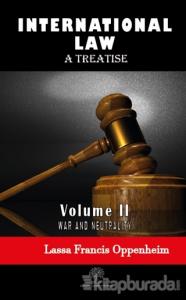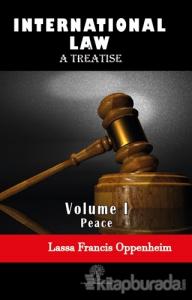International Law. A Treatise Volume 2.War And Neutrality

International Law in the meaning of the term as used in modern times did not exist during antiquity and the first part of the Middle Ages. It is in its origin essentially a product of Christian civilisation, and began gradually to grow from the second half of the Middle Ages. But it owes its existence as a systematised body of rules to the Dutch jurist and statesman Hugo Grotius, whose work, “De Jure Belli ac Pacis libri III.,” appeared in 1625 and became the foundation of all later development.
The Law of Nations is a law for the intercourse of States with one another, not a law for individuals. As, however, there cannot be a sovereign authority above the several sovereign States, the Law of Nations is a lawbetween, not above, the several States, and is, therefore, since Bentham, also called “International Law.”
Since the distinction of Bentham between International Law public and private has been generally accepted, it is necessary to emphasise that only the so-called public International Law, which is identical with the Law of Nations, is International Law, whereas the so-called private International Law is not. The latter concerns such matters as fall at the same time under the jurisdiction of two or more different States. And as the Municipal Laws of different States are frequently in conflict with each other respecting such matters, jurists belonging to different countries endeavour to find a body of principles according to which such conflicts can be avoided.
- Açıklama
International Law in the meaning of the term as used in modern times did not exist during antiquity and the first part of the Middle Ages. It is in its origin essentially a product of Christian civilisation, and began gradually to grow from the second half of the Middle Ages. But it owes its existence as a systematised body of rules to the Dutch jurist and statesman Hugo Grotius, whose work, “De Jure Belli ac Pacis libri III.,” appeared in 1625 and became the foundation of all later development.
The Law of Nations is a law for the intercourse of States with one another, not a law for individuals. As, however, there cannot be a sovereign authority above the several sovereign States, the Law of Nations is a lawbetween, not above, the several States, and is, therefore, since Bentham, also called “International Law.”
Since the distinction of Bentham between International Law public and private has been generally accepted, it is necessary to emphasise that only the so-called public International Law, which is identical with the Law of Nations, is International Law, whereas the so-called private International Law is not. The latter concerns such matters as fall at the same time under the jurisdiction of two or more different States. And as the Municipal Laws of different States are frequently in conflict with each other respecting such matters, jurists belonging to different countries endeavour to find a body of principles according to which such conflicts can be avoided.
- Yorumlar
- Yorum yazBu kitaba henüz kimse yorum yapmamıştır.



